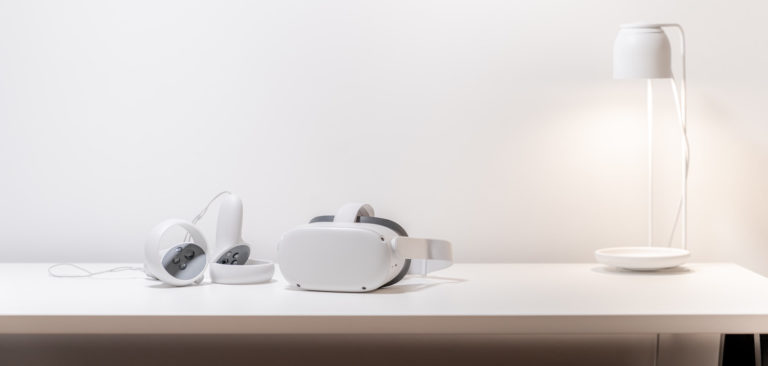
XR can take older adults to places all over the world without stressful plane rides, dangerous situations or expensive tourism. It can help them form communities with each other even over long distances. It can reconnect them with the excitement and activity they had in their younger days.
XR includes mixed, augmented and virtual reality technologies that blend the real and virtual worlds. Researchers are discovering the value it has for older adults.
What XR Has to Offer Older Adults
As of 2022, an estimated 28% of seniors live alone worldwide, accounting for over 14.7 million individuals. Loneliness is a major problem for older adults. Social isolation diminishes quality of life and can increase the risk of dementia, stroke and heart disease. At the same time, many senior citizens face health risks and mobility challenges that are worsened by excessive physical activity. This can make it difficult to form and maintain friendships later in life.
Extended reality could be the key to addressing this issue. XR technologies offer a way for older adults to continue exploring and socializing without compromising physical safety or comfort. This is particularly evident for people with mobility challenges since XR can allow them to experience things they otherwise would not be capable of. The immersive nature of XR makes it much more effective at improving well-being than other forms of media.
For example, one study conducted by MIT found that seniors who used VR to watch travel and relaxation experiences felt less socially isolated and less depressed than those who watched the same things on a TV. The difference is that XR takes people out of their daily lives and immerses them in a lifelike situation that makes them feel as if they were doing something else. By contrast, videos on tablets or TVs feel more like watching something they can’t actually experience.
The experiences that older adults can access through XR are fun and exciting. There’s a misconception that XR technologies are just for younger people. This isn’t the case at all. For example, one VR company designs experiences specifically for seniors, with nostalgic offerings like a road trip along Route 66 or spectacular classical and jazz concerts. Older adults can even go skydiving together. Some studies even indicate that this form of “reminiscence therapy” can help treat memory loss.
Potential Drawbacks of XR for Older Adults
Like any other technology or advancement, XR isn’t without its potential drawbacks. Some of these could be resolved with increased technological development, while others are related to biological and social complexities.
Perhaps the first complication that comes to mind for many people is the stereotype that older adults don’t like using technology. This isn’t necessarily true, however. In 2017, four out of 10 seniors owned a smartphone, and 34% were on social media. This number has certainly increased over the intervening years, and seniors even have a lively community on TikTok, the most youth-oriented social media platform yet.
Adoption of XR tech among older adults could be increased with greater exposure. Researchers have pointed out that many video games are not designed with senior citizens in mind, and some of them might be unfamiliar with common game mechanics. These factors may make it difficult for older adults to dive right into XR experiences. Things tailored for older adults in terms of content, controls and features may be needed to improve seniors’ experience with and perception of XR.
One of the major health concerns related to XR, and technology at large, is blue light. Prolonged exposure to blue light from computer screens like those in XR devices can negatively affect users. It’s known to have an adverse impact on sleep and sleeping patterns. Without blue light-blocking filters, excessive screen time can lead to insomnia and other disorders. However, as long as the time spent in XR is moderated, seniors are unlikely to experience these effects.
Outlook for XR in Care and Well-Being
Will XR really emerge as a high-quality self-care option for older adults? That will depend on whether or not seniors take a liking to the technology and if developers create a welcoming market for older players. In general audiences, VR has already been found to be a powerful therapeutic tool, especially for treating people with limited mobility due to complications like a stroke.
Lighter XR technologies, like augmented reality, may help ease older adults into the niche and improve familiarity with game mechanics. Mixed reality remains underdeveloped compared to AR and VR but could also prove to be a great option for older adults one day. For example, seniors can reconnect with old friends by playing a game of virtual chess together through the metaverse, even thousands of miles apart. Increasing the availability of these social experiences in XR will be key to addressing isolation among older adults.
VR is definitely in a growth state in the 2020s, though. The chances are good that game and experience developers will slowly expand their offerings to be more inclusive of the senior market.
Where to Start With XR for Older Adults
Getting started can be fairly easy for those who think XR may be helpful for themselves or an older adult they know. There are numerous headsets on the market today, but the wisest choice is to start with the most budget-friendly option with plenty of good experiences and games available.
Do plenty of research on the types of XR experiences that would be most interesting, and look into any accessibility features certain games or headsets may have. Once older adults get the ball rolling in XR, they’ll find an exciting world of new experiences, fresh sights and fun opportunities.
 April Miller is a senior writer at ReHack Magazine and editorial contributor at AR Insider. She specializes in VR/AR, IoT, and business technology. See her work here and follow her @rehackmagazine.
April Miller is a senior writer at ReHack Magazine and editorial contributor at AR Insider. She specializes in VR/AR, IoT, and business technology. See her work here and follow her @rehackmagazine.






